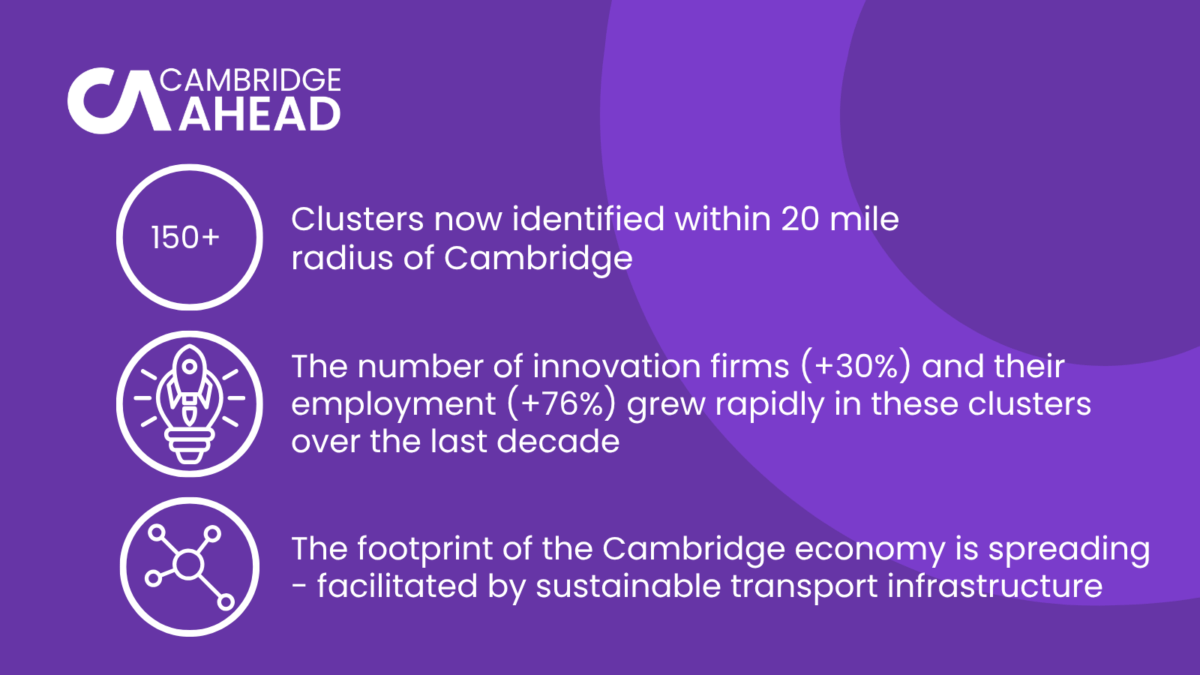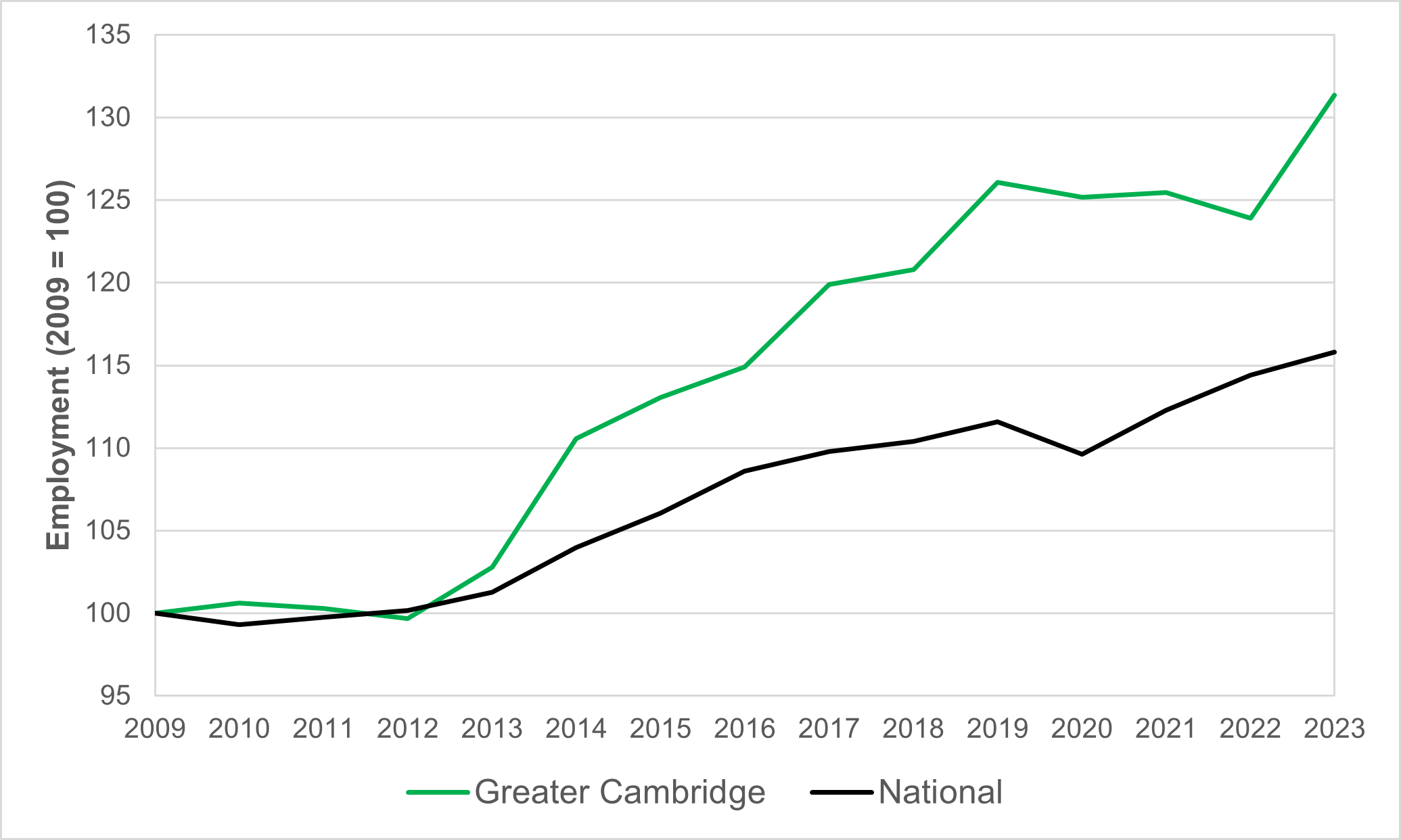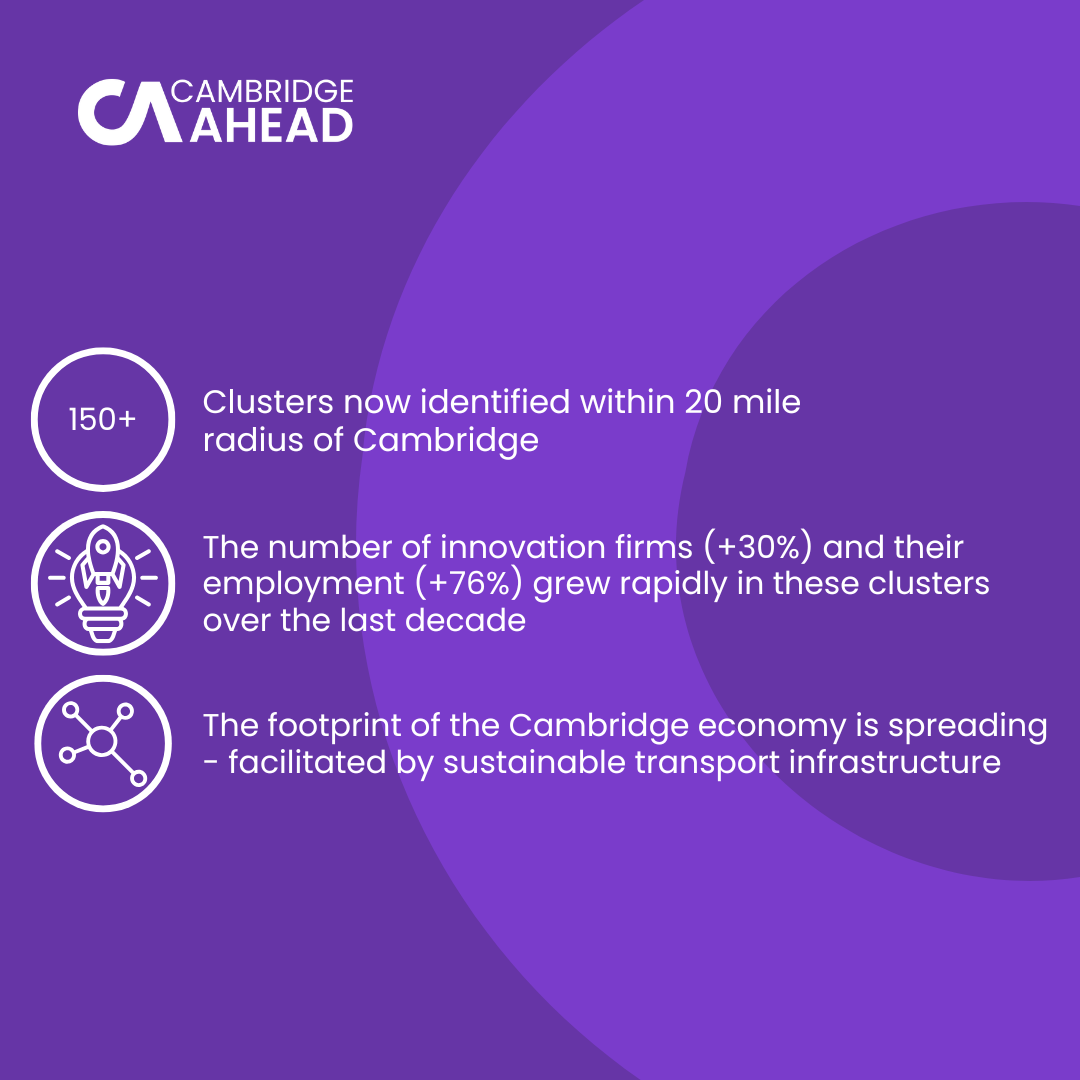
The Cambridge Phenomenon continues to intensify and spread out into new locations as businesses double down on clustering to succeed.
Cambridge Ahead published new research today, undertaken by the Centre for Business Research (CBR), taking a deep dive look at clusters in the Cambridge city region economy over the last decade. The research highlights the phenomenal growth of the Cambridge economy, far outpacing the national economy, and the central role of business parks and clusters in supporting high-value job creation.
Key findings:
- The research reveals there are now over 150 clusters (business parks, organic clusters, and major employers) in the 20-mile radius of Cambridge – with over 100,000 employees in over 4,000 companies in these locations.
- Innovation activity in these clusters has intensified over the last decade, including the disruption and changes to working patterns during, and since, the pandemic. The number of Knowledge Intensive (KI) companies in these clusters rose by 30% and the number of employees in KI companies in these locations rose by 76% between 2015-16 and 2023-24. These clusters are now home to 77% of all Knowledge Intensive (KI) employment in the Cambridge corporate economy, up from 67% a decade ago.
- The innovation economy has also spread outwards from Cambridge, notably north in the Cambridge – Waterbeach – Ely corridor. Business parks in this corridor have seen large increases in KI employment over the decade, such as Evolution Business Park (+57%), Lancaster Way (+23%), and Cambridge Research Park (+40%).
- Large Life Sciences campuses play a dominant role in the Cambridge economy and labour market. In just nine campuses, largely located to the south of Cambridge, there are over 230 companies employing over 17,000 people. The wider employment in these locations becomes even more significant with hospital and research institute employment. Cambridge Biomedical Campus currently hosts over 22,000 employees.
- Improved transport infrastructure, including Cambridge North Station, the Guided Busway, and planned Cambridge South Station, has supported cluster growth by widening the labour catchment and improving connectivity. The A14 upgrade has also facilitated growth along the Cambridge–Huntingdon corridor notably at Buckingway Business Park.
Cambridge Ahead now calls on policymakers to prioritise delivery of public transport infrastructure as an urgent priority to unlock Cambridge’s growth potential and spread opportunity to more communities in the region.
The report notes that growth in the Greater Cambridge region has far outpaced the national economy in the entire period since 2009, with Knowledge Intensive employment making the difference (see chart below).


Source: CBR’s calculations based on data from BRES (Norris)
In the period since 2015, as the clustering of innovation firms has intensified, a number of business parks have transitioned their offer and make-up of companies. Moving from non-knowledge intensive sectors to innovation sectors – including life science, digital, and high-tech manufacturing.
Despite Cambridge’s strong growth, the concentration of KI employment and existing infrastructure and housing constraints highlight the need to plan carefully for the future to support good growth across Cambridgeshire and beyond.
“This research shows precisely how Cambridge has become the most intense science and tech cluster in Europe, and second in the world only to San Jose, CA. Business parks and clusters have been the springboard to success for the Cambridge innovation economy. Cambridge’s business and science parks are proven places to succeed in high-risk innovation and their offer is more popular than ever.
The picture is clear when you look at the map. Provision of transport infrastructure has facilitated the phenomenal growth of the Cambridge economy and crucially, spread opportunity to more people in more locations. Decisionmakers should urgently prioritise the delivery of new transport corridors and infrastructure to unlock further growth and spread benefits wider.”
“The continued growth of the Cambridge Biomedical Campus over the last decade is testament to the world-class health and life science collaboration driving discovery from bench to bedside. What this insightful report shows is that future growth of the campus and the benefits it delivers needs to be supported by comprehensive infrastructure investment, particularly reliable and safe transport links.”




